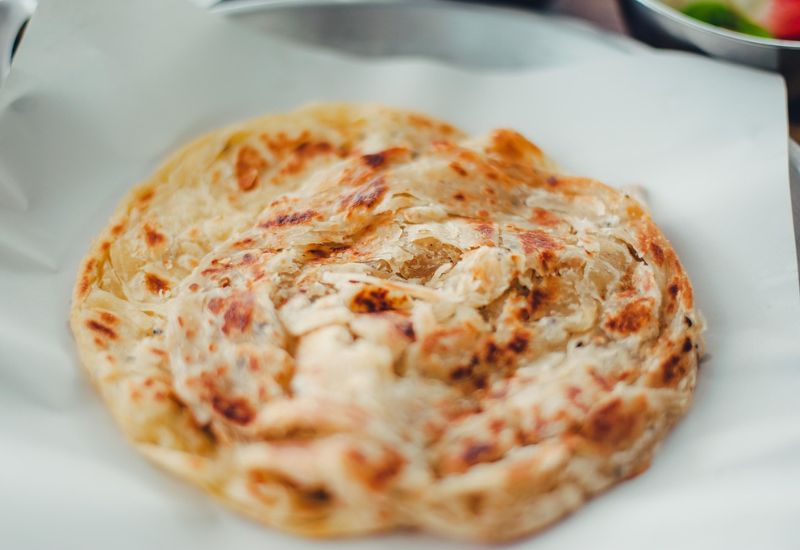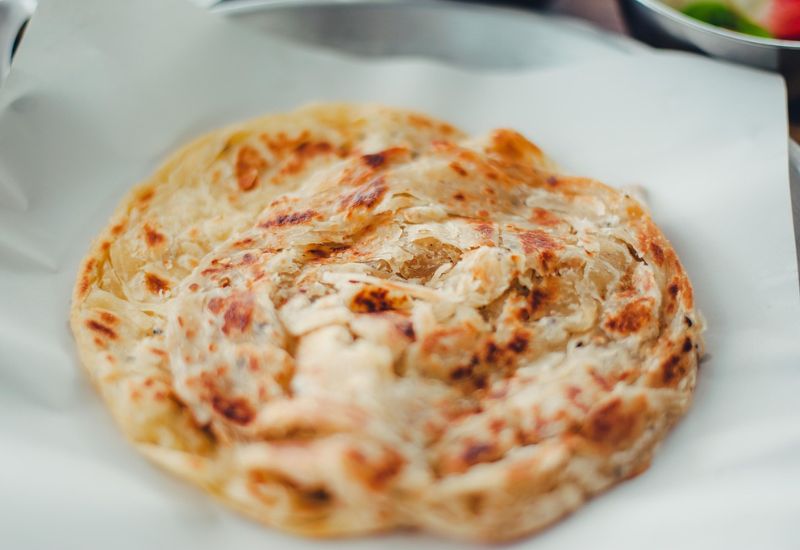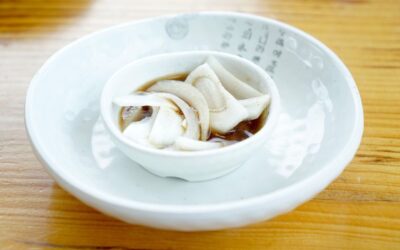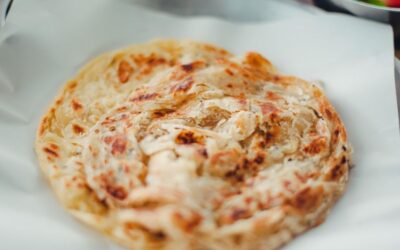Introduction: The Tale Of Two Parottas
Butter and hot, crispy layers go supreme with a just-flipped parotta, any spicy salna, or even a luscious chicken gravy to satisfy any craving. Today’s health-conscious consumers favour wheat parotta as a guilt-free, light option.
In the wheat parotta vs normal parotta, the battle of flavour vs fitness is being waged, and both have a strong case to build for. Let’s peel those layers and find out who really reigns on the plate.
Also Check – Why Fish Is Better Than Other Meat?
What Are Wheat Parotta And Normal Parotta?
The Og – Normal Parotta
Maida, or refined wheat flour, is used to make regular or maida parottas. It is not just prepared, but it is carefully crafted by folding it multiple times by stretching i,t and applying oil on it several times for an elastic crispy layers.
The Health-Friendly Upgrade – Wheat Parotta
To prepare the wheat parotta, whole wheat flour (atta) is used in place of maida. It resembles the flakiness of its old-fashioned relative, yet it has a better nutrition profile and provides more fibre, fewer empty carbs, and plenty of oil tends to be.
Nutritional Showdown – Wheat Parotta Vs Normal Parotta
1. Carbs And Calories
Normal Parotta: Calories-wise, it can have 300-350 calories per serving, lots of carbs, and fat, thanks to the refined flour and copious oil or ghee usage.
Wheat parotta, on the other hand, will carry about 200-250 calories with a lower glycaemic index, fibre content, and better digestion with sustained energy. Wheat parotta can be stored by quick steaming or heating on a tawa so that it doesn’t dry out too quickly.
2. Fibre Content
The higher fibre content of whole wheat reduces cholesterol and blood sugar while preventing stomach issues. Maida is refined and contains only a few of such rich nutrients.
3. Minerals And Vitamins
Wheat parottas contain iron, magnesium, and the natural vitamins that are present in whole wheat flour. Because of refining, normal parottas lack these micro-nutrients unless added artificially.
Texture, Taste & Cooking – Which One Reigns In The Kitchen?
1. Flavour And Taste
- Normal Parotta: Indulgent, buttery and rich. It tastes good as the layering has a good crunch and chew.
- Wheat parotta: A little heavier, nuttier, and less oily. It has a healthier taste that is more delicious when combined with light gravies.
2. Cooking Process
Both involve kneading, resting and folding. However, regular parottas will stretch more due to the notion of maida being elastic and hence will get more layers. Wheat parottas may require the addition of some oil or even some measure of maida so as to achieve that typical flakiness.
3. Reheating And Shelf Life
High content of oil makes normal parottas remain soft longer and reheat easily. Wheat parottas may dry out if not cooked properly, but they can be recovered by heating them quickly or tossing them on the tawa.
Wheat Parotta Vs Normal Parotta: What’s Right For You?
- Weight Watchers & Diabetic
For the weight watchers or diabetic cases, wheat parotta is a better option. It’s complex carbs break down slowly, there are fewer sugar spikes, and it keeps you fuller for longer.
- Kid And Energy Requirements
For those who are children or for those who have higher calorie requirements, a regular parotta is a high-calorie food. When paired properly with another protein-rich food, it can be a substantial meal.
- Vegan Heart-Healthy Diets
Wheat parottas can be a healthy option because they utilise only a small amount of oil or ghee, making them a healthy option and not just an alternative. Wheat parotta can satisfy the vegetarians, and as a bonus, it is a treat for vegans too.
Pairings Matter – What Each Does With Timeless Dishes

1. With Salna & Kurma
- Normal Parotta: Absorbs big, touchy gravies like chicken sallaa, mutton kurma. The flavours get stuck between the layers, resulting in juicy, sloppy bites.
- Wheat Parotta: It goes well with a light kurma or with a vegetable gravy, in order that the overall meal is nicely balanced.
2. With Biryani/Chicken Fry
If you are eating spicy or oily items like biryani or fried items like chicken, then the wheat parotta is minimally flavoured and more neutral. As usual, parotta will make the meal too rich or too heavy.
3. Paneer Or Egg Masala
Both parottas go very well with vegetarian gravies. Its nutty taste of wheat parotta comes as an excellent combination for mild creamy paneer dishes, where normal parotta acts as an ideal accompaniment for spicy egg masalas.
Availability And Popularity
- Restaurant Menus
As an everyday staple for Tamil Nadu, Kerala, and street foods, the normal parottas are often served with layered beef or chicken gravies. However, health-conscious restaurants and diet centres are now serving wheat parottas as a wheat parotta option to their patrons.
- Home Cooking
With the growing awareness about the side effects of refined flour, home cooks are getting more novice with wheat parottas. With simple tips (such as adding hot water or milk when kneading), it has never been easier to get restaurant-quality pizza in the comfort of your own home.
Rule Your Hunger At Sulthan’s Biriyani:
At Sulthan s biriyani, we do not compromise flavour. That is why we have flaky, indulgent normal parottas as well as healthy, hearty wheat parottas. Being the authority figures in the culinary field, we think your plate should be your choice and your individuality. Experience a taste of the world- a layer at a time.
Conclusion: Wheat Parotta Vs Normal Parotta Concludes
Finally, wheat parotta Vs normal parotta is not about deciding who wins, but rather about a better diet and deciding what is best suitable to your body and mood. Craving comfort? Order the old-time favourite maida parotta.
Fancy a clean eating experience that does not compromise on flavour? Wheat parotta is your hero. Both are welcome at the table in the current transformed food culture, and the choice is now on your plate.
FAQs On Wheat Parotta Vs Normal Parotta
1. Is it acceptable to eat wheat parotta every day?
Sometimes it’s fine, especially if it has less oil. Eventhough a carefully prepared parotta can add up some calories if it isnt complemented by a healthy vegetables and healthy diet. Make an effort to include it with protein and veggies.
2. Can wheat parotta be made as flaky as conventional parotta?
Practice, yes! With the inclusion of hot water, a small amount of oil and resting, it is possible to produce flaky wheat parottas which also approximate the original texture.
3. Does normal parotta have any health problems?
This is not always the case, but frequent indulgence in maida and oily foodstuffs may change in the long run. It is to be taken every now and then, and in combination with protein and vegetables.
4. Is it true that the two parottas taste the same?
Not exactly. Parottas made with normal flour contain a rich buttery flavour, whereas closer flavour of parottas made of wheat is earthy and wholesome.
5. Which parotta can help with weight loss?
The reason why wheat parotta is a weight loss food is perhaps because of the higher fibre and low calorie content in it when it is prepared with little to no oil.




